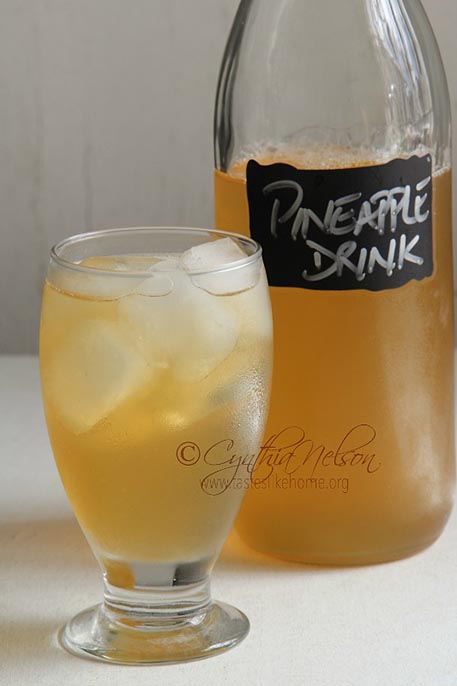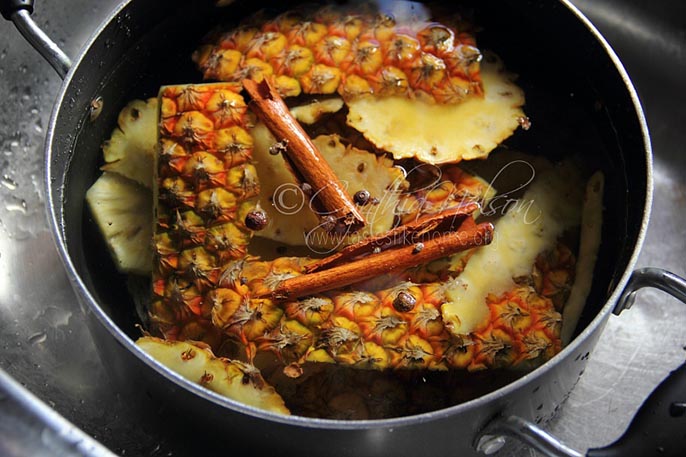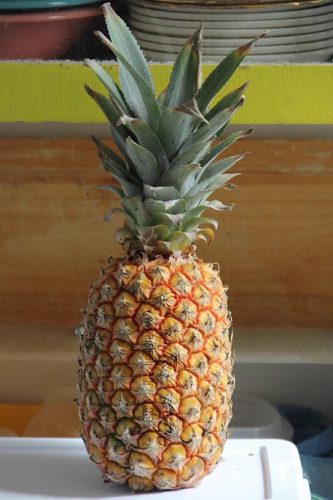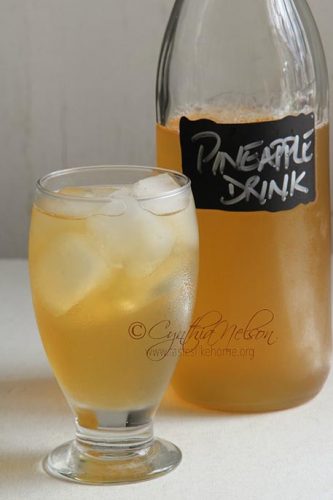Hi Everyone,
The beginning of this school year will be no different from others. The first assignment many children will be given when they return to school on Monday will be to write an essay about their August holidays. Remember those days? The Scene was  off on August holidays too, and even though my childhood days are behind me, I can write a few essays about Tastes Like Home’s August holidays’ happenings. There was nostalgia, learning and relearning how to cook certain things and trying a familiar ingredient in an unfamiliar way.
off on August holidays too, and even though my childhood days are behind me, I can write a few essays about Tastes Like Home’s August holidays’ happenings. There was nostalgia, learning and relearning how to cook certain things and trying a familiar ingredient in an unfamiliar way.
This week begins a five-part series on Tastes Like Home’s August Holidays. First up, Pine Drink.
As a food writer, one can get caught up in pushing boundaries, and coming up with new ideas to keep topics, issues and recipes fresh. But every so often we get to take a step back – for nostalgia, to rediscover, and to appreciate the simplicity of certain things. That is what happened when I made drink using the skin of a pineapple over the holidays; something I had not done in years.
Plentiful, particularly in the hot summer months of the year, pineapples are considered one of the most exotic fruits. They come in varieties – long and short, with round bottoms and tapered shape, protected by a rough sturdy outer skin that feels more like a bark and a proud pointy crown. A favourite with locals and visitors, sweet, fruity pineapples are peeled, cut and devoured in a variety of ways. We eat our bellies full of decoratively cut wedges of the fruit, sometimes with a light sprinkling of salt, or sliced into thick rounds. Chopped or sliced thinly and made into pickles like salsa or Trini chow; charred over a grill and served with similarly prepared meats, seafood and burgers – are all ways we pleasurably eat pineapples. We preserve the fruit by making jam, jellies, hot sauces and other sweet-heat fruit condiments.
While there is much to be done with the flesh of the pineapple, the thick, gristly skin is not to be outdone. It makes a refreshing drink with deep pineapple flavour that the flesh, if pureed and made into a drink, cannot rival. Using the skin of a pineapple to make drink instead of discarding it, is getting your money’s worth for the fruit. You get to eat the pineapple and drink it.
I have always loved when my mother made pine drink – that’s the fond shortened name for the drink, instead of pineapple drink. The skin along with the core of the pineapple would be rinsed and tossed into a pot with a stick of cinnamon, topped with water, covered and be brought to roaring boil for several minutes. With the heat shut off the mixture would be left to steep overnight, strained, and sweetened the following morning. Refrigerated, the pine drink was ready for consuming later in the day.
Imported pineapples from North America are available year round in Barbados but I wait until the summer months when we get pineapples from Guyana to buy the fruit. Prior to now, it has been a few years since I’ve made pine drink, and that’s because I am not usually in the region around that time, but this year I was, so I bought pineapples and I made pine drink. After the first batch, I found myself buying pineapples, not for eating, but more for the skin to make drink. On one occasion, instead of eating the flesh, I added everything – flesh, core and skin to the pot to make drink. Pine drink. It is one of my life’s pleasures.
The season is not yet quite over, so if you haven’t yet had a pineapple for the season, please do so and save that skin to make drink. The August holidays have always been about eating fruits and thirstily downing glasses of ice cold drinks and juices made with their flesh, pulp, juice or skin.
Next week: Stovetop roasted breadfruit.










